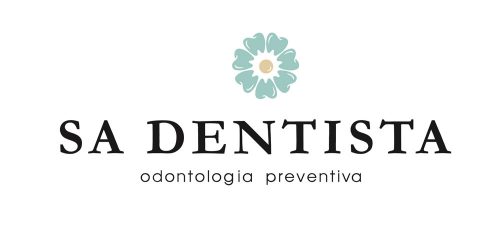
CONSERVATIVE DENTISTRY
When a tooth is damaged despite the efforts of prevention, we cure it, to avoid the extraction of a damaged tooth.
Informative visit
Ask fir a first informative visit by phone to 971 37 52 38.
The first visit is essential to get to know the patient and what motivates him to visit the dentist.
This visit consists of a general recognition of the patient’s health status as well as an oral examination to determine what their needs are.
Once this is done, the patient will be informed of any problem they might have, and in the event that the treatment is simple, they will be given a budget.
In more complex cases, it is necessary to collect more information to be able to specify the diagnosis and carry out a personalized treatment plan. In this case, it will also be reported what tests are necessary and a budget for these will be delivered.
In more complex cases, it is necessary to collect more information to be able to specify the diagnosis and carry out a personalized treatment plan. In this case, also necessary tests will be reported and a budget for these will be delivered.


Simple fillings and reconstructions
With the fillings, with state-of-the-art materials, we restore the original shape of a piece affected by trauma or caries.
These repairs are fillings of the cavities once the affected dental tissues have been removed.
When a cavity damages a tooth, a cavity is produced and the bacteria and microorganisms that accumulate there produce a series of acids that are capable of breaking down the structure of tooth enamel in the same way that lemon juice damages marble stone.
To do a filling, the cavity has to be completely cleaned for this we use the turbine, avoiding removing healthy dental tissue, then the cavity already cleaned must be covered by some material that can completely seal the damage and at the same time give the correct shape to the tooth.
Formerly amalgams were used, which are a mixture of silver and mercury, today we use white fillings, they are made of a material of the same hardness as the tooth called "composites", we have all the colors so that the difference is not noticeable with the rest of the tooth, being very aesthetic and functional.
Dental reconstruction is a complex filling since it is necessary to repair most of the tooth, using bolts and special attachments, it is a procedure aimed at repairing teeth damaged by both caries and accidental fractures.
Dental reconstructions can be of various types, usually involving more difficulty than when a filling is made and the piece is molded. Reconstruction is considered when the majority of the tooth needs to be repaired. The objective of this type of procedure is to return the tooth to its functionality and solve the resulting aesthetic problems.
Root canals
Endodontics or nerve treatment is the procedure by which the affected pulp of a tooth is removed and the dental canal is sealed.
This specialty includes the set of treatments involved with the pathology of the nerve of the tooth.
The main cause of nerve involvement is tooth decay, but it can also be affected by periodontal pathology (disease of the gums and the support of teeth in the bone), trauma, bruxism (clenching the teeth or making them grind), etc.
Symptoms that may indicate the need for a root canal may be one or all of the following: constant severe pain, pain when chewing, increased sensitivity to cold or heat, discoloration of the tooth, and the appearance of phlegmon or fistula in the gum.
It is about the total and absolute cleaning of the dental channels located in the roots of the tooth, in order to later seal them and prevent them from getting contaminated again.
When losing vitality the tooth becomes more fragile and it is recommended to reinforce it with a crown.
The teeth have one or more roots depending on their shape and location: One root for the incisors and canines, two for the premolars, and three or more for the molars.
The treatment ends when the dental canal is totally free of microorganisms and with a perfect seal so that it does not become contaminated again. To achieve this, several sessions may be needed, depending on the degree of difficulty of each case.


Cariostatic
A cariostatic is a material that stops the process of cavities.
In specific cases such as; milk teeth, terminally ill people, very old people, it prevents us from using the turbine, which is sometimes traumatic.
The cariostatic that we use is Fluoroplat, it is “Silver Fluorurodiamine” it is a liquid material that manages to remineralize the teeth with Fluoride and protect them from cavities or paralyzing active cavities thanks to the bactericidal action of Silver.
If there are already cavities in the milk teeth, we usually treat it with cariostatic, since we know that those teeth are going to fall out and other new pieces are going to come out, thus we prevent children from having to go through the process of dental treatments with the use of the turbine .
We also use cariostats on different occasions, for example in a carved tooth on which a crown is going to be placed, the cariostatic protects the dental stump.
It is also indicated in terminally ill or very elderly patients who will be able to keep their teeth without having to extract them, likewise in those cases in which, due to different circumstances, the collaboration of patients is difficult.
Amalgam replacement
Replacement of the old mercury amalgams with composite material.
Formerly the fillings were made with a mixture of silver and mercury, if the filling has to be repeated we use the new composite materials, to remove the amalgams following the protocol of the WHO, World Health Organization.


Dental Aesthetics
We improve the teeth to achieve greater facial aesthetic harmony.
We can improve the color, shape, and decrease or increase the size of the tooth, with the latest generation materials that allow us to maximize facial aesthetics.
For this, the following factors must be taken into account:
The health and hygiene of the mouth, the size, shape, color, and position of the teeth, the absence of parts, the relationship of the gum to the teeth, the relationship of the lip to the teeth, etc.
Only multidisciplinary dentistry is able to interact to achieve a balanced smile.




